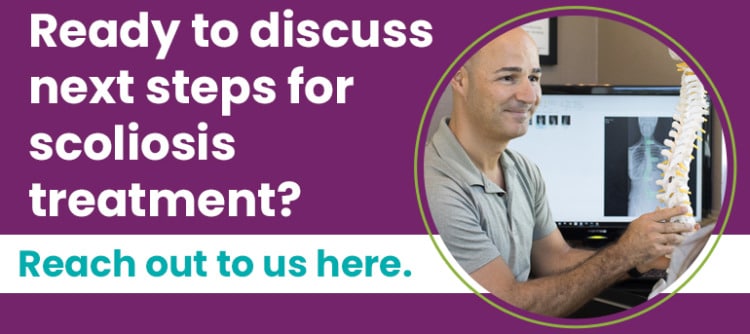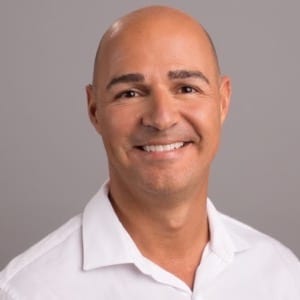Macon Scoliosis Treatment: Non-Surgical Solutions
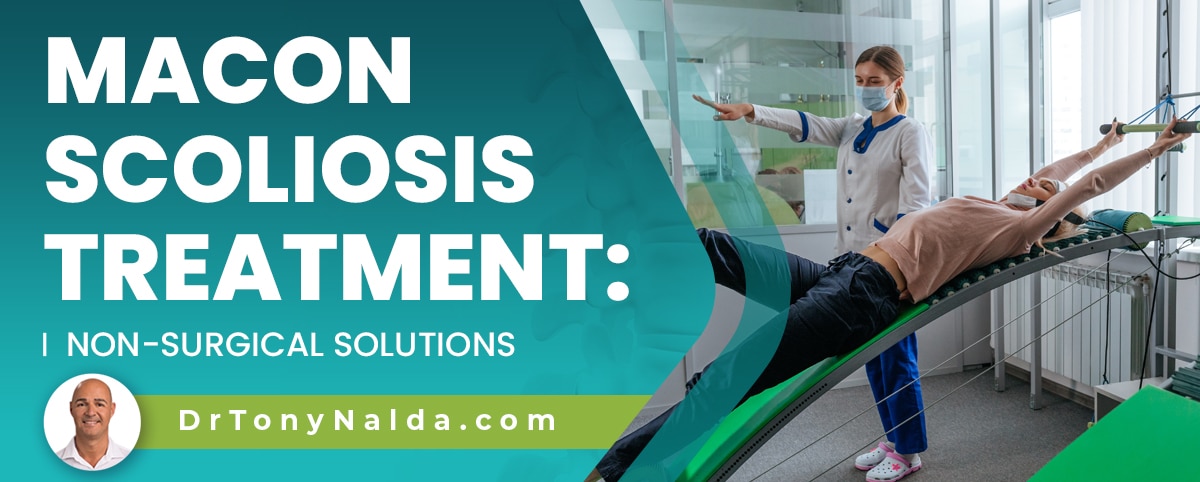
All cases of scoliosis can benefit from an effective and customized treatment plan. Non-surgical scoliosis treatment is also known as a functional and/or chiropractic-centered approach, and this is because it works towards preserving as much of the spine's natural strength and function as possible.
From Macon, GA to Orlando, FL is a 5.5-hour flight, and traversing that distance can give GA residents access to Dr. Tony Nalda's Scoliosis Reduction Center®: a leader in innovative non-surgical scoliosis treatment.
The best way to respond to a diagnosis of scoliosis is with a proactive treatment plan.
Table of Contents
How is Scoliosis Diagnosed?
Scoliosis is diagnosed through a combined physical examination, taking the patient's family history and medical history, performing an adams position test, and X-ray results.
An X-ray is needed to officially diagnose scoliosis because scoliosis doesn't just cause the spine to bend unnaturally to the side, but also twist, making it a 3-dimensional condition.
An X-ray is needed to confirm the rotational component and determine the patient's Cobb angle measurement.
Cobb Angle and Condition Severity
A patient's Cobb angle is a key piece of information that treatment plans are shaped around, and condition severity is based on the measurement; the higher a patient's Cobb angle measurement, the more out of alignment the spine is, and the more severe the condition.
- Mild scoliosis is diagnosed with Cobb angle measurements of between 10 and 25 degrees
- Moderate scoliosis is diagnosed at between 25 and 40 degrees
- Severe scoliosis involves cases with Cobb angles of 40+ degrees, and very-severe scoliosis is diagnosed at 80+ degrees
While there are some limitations to the measurement, Cobb angle is still considered the gold standard in scoliosis assessment.
Once scoliosis is diagnosed and classified based on patient age, condition type, severity, and curvature location, the type of treatment applied is the most important decision to be made; as a progressive condition, treatment is about managing an ongoing condition for the best quality of life.
Treatment and Progression
Treating scoliosis is a restoration process of the spine's healthy curves and alignment, and the best way to minimize the condition's effects is to treat conditions proactively.
Even if scoliosis gradually progresses, it's not a static condition, and where a scoliosis is at the time of diagnosis doesn't indicate that's where it will stay, especially without the help of proactive treatment.
As a progressive condition, the nature of scoliosis is to get worse over time, and as it's growth that makes it progress, childhood scoliosis should always be taken seriously and treated proactively.
While scoliosis is more commonly diagnosed in children, it also affects adults, and while children are more likely to face rapid progression due to the constant progressive trigger of growth, adults also face progression, particularly once age-related spinal degeneration becomes a factor.
As progression occurs, the size of the unnatural spinal curve is increasing, the condition is becoming more severe, and its effects are becoming more overt.
As progression occurs, the condition is becoming more complex to treat, and its effects are becoming more pronounced.
In children, the main effect of scoliosis involves postural changes:
- Uneven shoulders
- Uneven shoulder blades
- Rib cage hump
- Uneven hips
- Arms and legs hanging at different lengths
As progression is occurring, posture is becoming more disrupted; correcting poor posture is a focus of treatment.
Scoliosis Pain
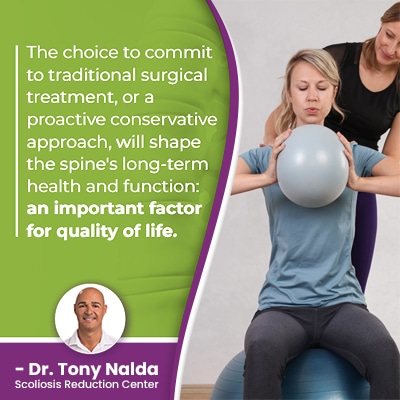 Scoliosis pain is the main symptom of adult scoliosis and can involve muscle pain, back pain, and radiating pain due to nerve compression.
Scoliosis pain is the main symptom of adult scoliosis and can involve muscle pain, back pain, and radiating pain due to nerve compression.
Pain isn't considered a common effect of childhood scoliosis because the condition doesn't become compressive until skeletal maturity has been reached in adulthood.
In young patients whose spines are still growing, the constant lengthening motion of growth counteracts the compressive force of the unnatural spinal curve; it's compression (uneven pressure) of the spine and its surrounding muscles and nerves that is the main cause of scoliosis pain.
Scoliosis pain will also increase alongside progression, and a focus of adult scoliosis is on pain management and improving spinal support and stability.
How Treatable is Scoliosis?
As a progressive condition, scoliosis is incurable, but it can be highly treatable, particularly with early detection and intervention; however, the benefits of early detection are only available to those whose treatment response is proactive.
There are two main scoliosis treatment approaches: scoliosis surgery or non surgical treatment. While traditional surgical treatment was the dominant choice for many years, that doesn't mean it was the best or only choice.
The choice to commit to traditional surgical treatment, or a proactive conservative approach, will shape the spine's long-term health and function: an important factor for quality of life.
Non Surgical Scoliosis Treatment Options
Here at the Scoliosis Reduction Center® in Orlando, Florida, Macon GA residents can access an innovative non surgical treatment alternative through the integration of multiple non-surgical scoliosis treatment disciplines.
The complex nature of scoliosis necessitates the complete customization of effective treatment plans; no two cases are the same.
Not only does scoliosis range so widely in severity from mild scoliosis to very severe scoliosis, there are different curvature types and patterns, and different condition types with unique characteristics and treatment needs.
Most cases of scoliosis involve idiopathic scoliosis, approximately 80 percent, and the remaining 20 percent are associated with known causes: neuromuscular scoliosis, degenerative scoliosis, and congenital scoliosis.
No one type of treatment is enough to impact scoliosis on multiple levels the way it needs to be for sustainable long-term results, but conservative treatment integrates a number of different treatments so conditions can be impacted on every level.
Curvature Reduction
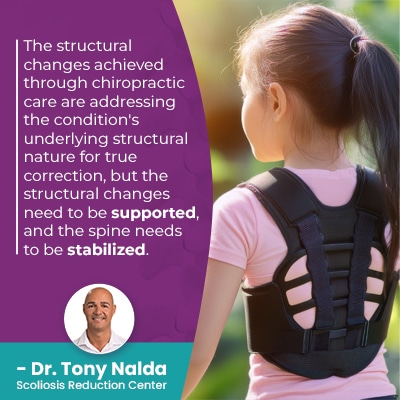 Chiropractic care and a variety of chiropractic techniques and specific spinal adjustments are applied to work towards repositioning the curve's most-tilted vertebrae back into alignment with the rest of the spine, and when successful, this is achieving a curvature reduction and restoring the spine's healthy curves.
Chiropractic care and a variety of chiropractic techniques and specific spinal adjustments are applied to work towards repositioning the curve's most-tilted vertebrae back into alignment with the rest of the spine, and when successful, this is achieving a curvature reduction and restoring the spine's healthy curves.
The structural changes achieved through chiropractic care are addressing the condition's underlying structural nature for true correction, but the structural changes need to be supported, and the spine needs to be stabilized.
Muscle Strength and Balance
Physical therapy and scoliosis-specific exercises can work towards improving the spine's surrounding muscle balance and strength, and this can help sustain the structural changes achieved through chiropractic medicine.
Spinal Alignment
In childhood scoliosis, bracing can help by pushing the spine into a corrective position; as scoliosis bracing is more effective on growing spines, it is a regular facet of childhood scoliosis.
Here at the Center, the ultra-corrective ScoliBrace is applied to prevent further progression and achieve corrective results.
When combined with other corrective treatment disciplines, bracing can help augment corrective treatment results.
As a progressive condition, treatment has to be about how best to monitor an ongoing condition, and this involves rehabilitation.
Rehabilitation
Rehabilitation can include continued chiropractic care, lifestyle guidance, and the prescription of scoliosis exercises specifically designed for patients to perform from home to further heal and stabilize the spine.
Treatment results are limited if they can't be sustained for the long term, and rehabilitation is about holding results.
Conclusion
While a 5.5-hour flight from Macon to Orlando to access Dr. Tony's impressive treatment center might seem troublesome, considering the far-reaching effects of treatment-choice, it can be highly beneficial in the long-term.
As a scoliosis chiropractor, I can perform specific spinal adjustments to improve the spine's alignment and restore as much of its healthy curves as possible, and doing this without invasive spinal fusion is about protecting the spine's natural movement-based design.
With progressive conditions like scoliosis, when treatment is started can be as important as the type of treatment, and while there are never treatment guarantees, with early detection and intervention, there are fewer limits to what non surgical scoliosis treatment can achieve.
Treating scoliosis proactively means starting treatment as close to the time of diagnosis as possible, and a proactive conservative treatment approach is what patients of the Center benefit from.
Non-surgical treatment is the least invasive treatment option so is the best for long-term spinal health function, and strength.
Spine surgery is invasive and risky, and spinal fusion is no exception, and if a complication develops, severe health consequences can occur: nerve damage, excessive blood loss, infection, and a spine that's more rigid and painful.
I want patients to understand that scoliosis surgery isn't the only option, and many patients, particularly with early detection and intervention, don't need surgery.
The Center offers a safe, innovative, and comprehensive approach to non surgical scoliosis treatment, so for those in need of macon scoliosis treatment, don't hesitate to reach out to schedule a consultation.
Dr. Tony Nalda
DOCTOR OF CHIROPRACTIC
After receiving an undergraduate degree in psychology and his Doctorate of Chiropractic from Life University, Dr. Nalda settled in Celebration, Florida and proceeded to build one of Central Florida’s most successful chiropractic clinics.
His experience with patients suffering from scoliosis, and the confusion and frustration they faced, led him to seek a specialty in scoliosis care. In 2006 he completed his Intensive Care Certification from CLEAR Institute, a leading scoliosis educational and certification center.
About Dr. Tony Nalda
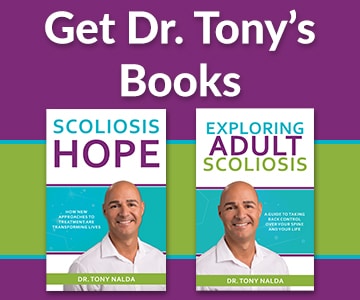 Ready to explore scoliosis treatment? Contact Us Now
Ready to explore scoliosis treatment? Contact Us Now